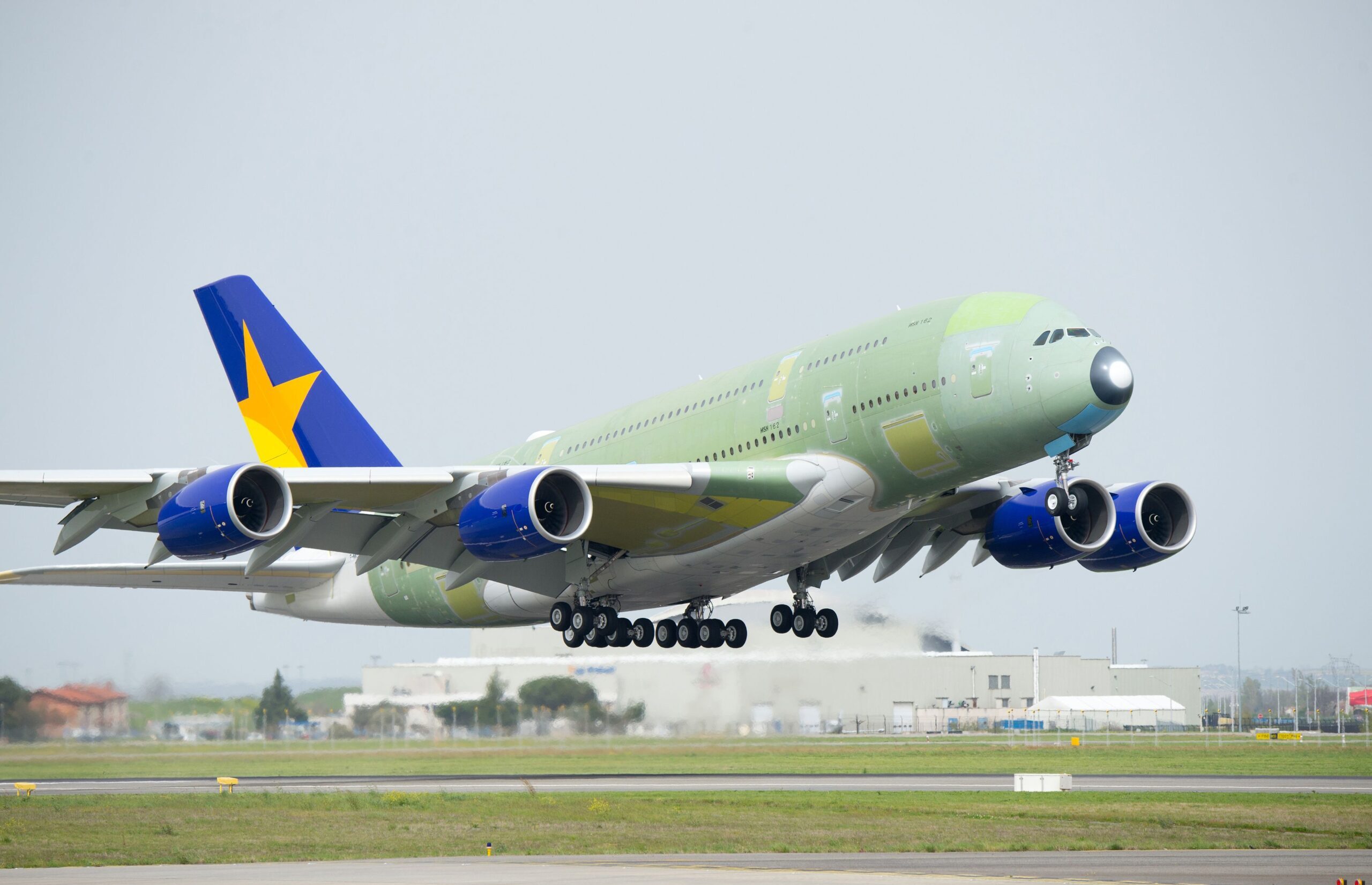Like many airlines a while back, Japan’s SkyMark Airlines wanted some A380s. The big mega jumbo was the ticket out of regional flying and into the glitter glamour of long-haul flying. So, SkyMark Airlines ordered half a dozen A380s. Why not? But like many airlines that ordered A380s, the deal ultimately fell through. Here’s the story of why.

A little airline with big ambitions
Back in 2011, SkyMark Airlines was Japan’s third-largest and fastest-growing airline. The Haneda-based airline began flying in 1998 as a low-cost carrier. Just a decade later, SkyMark wanted to transition to a premium carrier and start flying international routes. And what better way to announce your arrival than with a fleet of A380s.
In early 2011, SkyMark placed a firm order for four Airbus A380s. As is the way at these signing ceremonies, there was a lot of backslapping and nice things said.
“We believe that the A380, the world’s most cost-efficient, modern and environmentally friendly aircraft with cutting-edge technologies, will provide us with a strong competitive advantage and safe operation,” said Skymark Airlines President Shinichi Nishikubo at the time.
Just a few months later, in June, SkyMark added two more A380s to its earlier order. Shinichi Nishikubo then said the A380 was a “remarkable aircraft” and reiterated his earlier competitive advantage line. So far, so good.
Within three years, the first SkyMark A380 was assembled at Toulouse. In April 2014, Airbus completed the first test flight of SkyMark’s initial A380. All seemed on track for SkyMark to take delivery of their first A380 later that year.

A cash crunch at SkyMark Airlines
Back at Haneda, following the transition to full-service premium airline status, things were not going so swimmingly at SkyMark. After the A380 orders were placed, the Japanese yen dropped significantly against the United States dollar. SkyMark had to pay for its A380s and most of its other not insignificant costs in dollars while collecting ticket revenue in yen. In a nutshell, there was a critical cash crunch at SkyMark.
One month after the first test flight, SkyMark was meeting with financiers about payments due on the A380s. Airbus got wind of this and was worried about SkyMark’s ability to meet their commitments.
Airbus sent its own people in. Ultimately, Airbus agreed to alter the original purchase agreement. But there was a condition; if SkyMark failed to meet certain revenue targets, Shinichi Nishikubo was out and replaced with a person chosen by Airbus. No deal said SkyMark.
In a terse statement issued in late July 2014, Airbus said it was terminating the A380 purchase order “in accordance with its contractual rights.” Airbus said it reserved all its rights and remedies.

Six years down the track, SkyMark Airlines dodged a bullet
Airbus went on to sue SkyMark in 2015. At the time, a Bloomberg report said Airbus wanted approximately US$670 million in penalties. But by then, SkyMark had entered into bankruptcy protection in Japan. SkyMark said the contributing reasons were a weak Japanese currency, fuel contracts, and the dispute with Airbus.
Bankruptcy protection also spelled the end of Shinichi Nishikubo. He was replaced by Masakazu Arimori, who remains in the top seat at SkyMark to this day.
SkyMark went on to be restructured, sold, and to keep flying as a low-cost, primarily domestic Japanese airline.
It’s an entertaining story. But ultimately SkyMark dodged a bullet not getting the A380s. Simple Flying has extensively canvassed the saga of the A380. In 2020, the mega jumbo has become a costly albatross among many airline’s necks. Meanwhile, unlike most of the A380s around the place, SkyMark is still flying.
[ad_2]
Source link


